| PSC 2620: Woody Trees and Shrub | Course Home | Study Materials |
Pinus Species Comparisons
This page is intended to help you become more familiar with the different Pinus species. Here you can quickly compare the different species to better learn the distinguishing characteristics of each.
Needle
 |
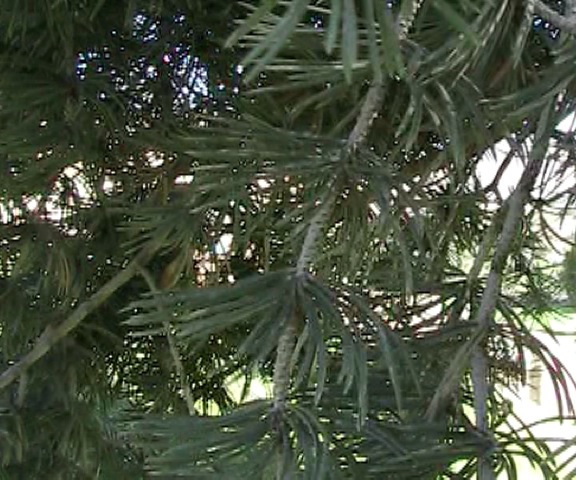 |
| Pinus aristata - The beedles are 1 inch long and form in clusters of 3-5 needles. They point towards the ends of the stems and are very dense, creating a bottle brush effect. Image: Dave Powell | Pinus edulis - The needles are arrayed around the stem in umbrella-like formation. |
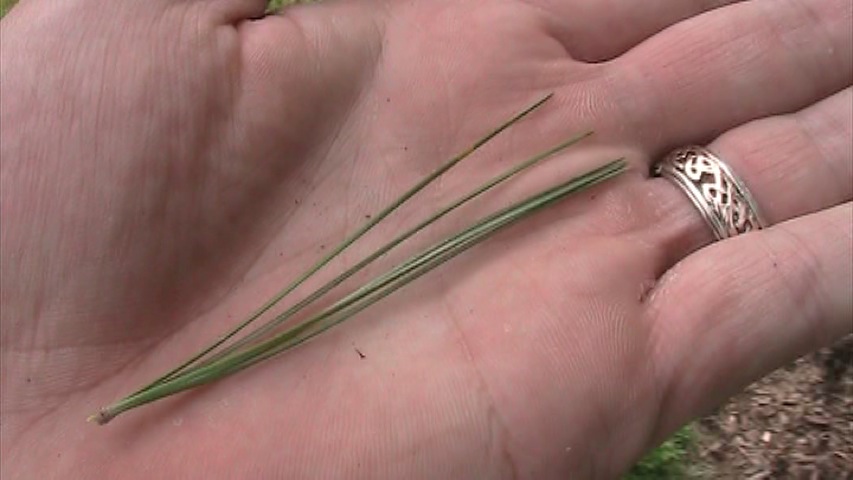 |
 |
| Pinus flexilis - The needles are 2 1/2 - 3 1/2 inches long and arranged in clusters of five. They are orientated towards the end of the stem. Mature needles are quite soft. | Pinus mugo - The neelds are 1 1/2 inches long and form in clusters of two. They are rich green color. Image: Georgia Kunev |
 |
 |
| Pinus nigra - The stiff needles are 3-5 inches long and form in pairs. They are dark green in color. | Pinus ponderosa - The needles are 5-10 inches long and end in a sharp point. They are blue-green in color and form in clusters of three. Image: J. S. Peterson |
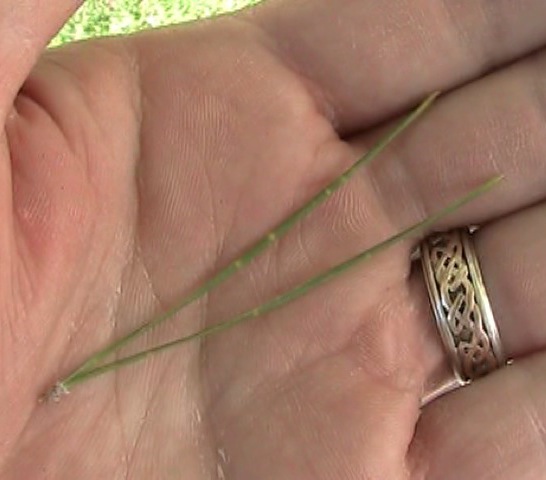 |
 |
| Pinus sylvestris - The needles are 1-3 inches long and a light blue-green color. They form in pairs. | Pinus wallichiana - The beautiful long needles are 5-8 inches long and held in clusters of five. The needles are soft and hang from the branch. |
Cone
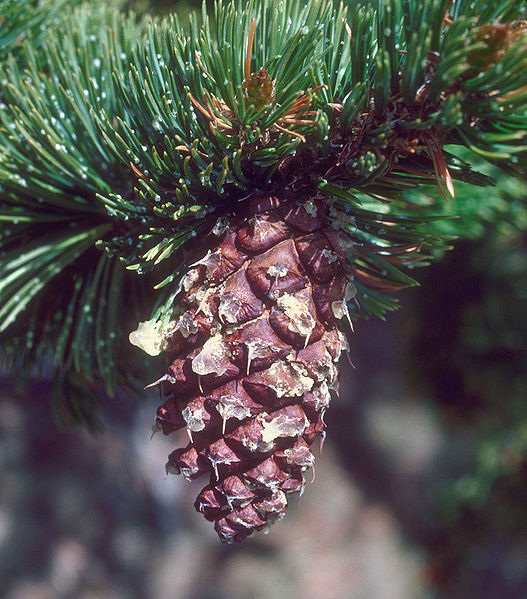 |
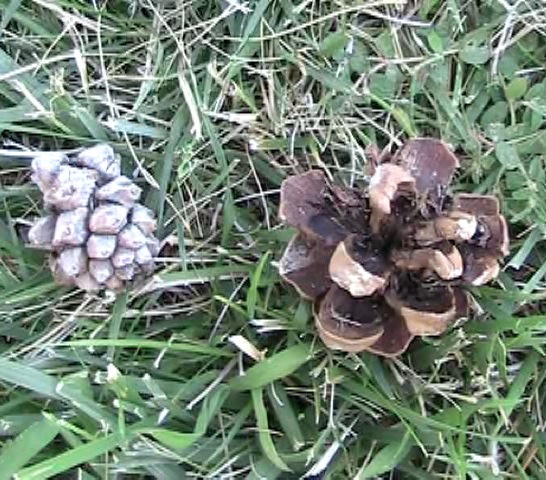 |
| Pinus aristata - The cone is 3 1/2 inches long and egg-shaped. Small bristles, or spikes, form on each cone scale. Image: Dave Powell | Pinus edulis - The cones are have pyramidal protrusions on each cone scale. They are 2-3 inches long and contain edible nuts. |
 |
 |
| Pinus flexilis - The cones are ovoid in shape and 3-6 inches long. They are very resinous. Image: Dave Powell | Pinus mugo - The cones are form in small clusters and are up to two inches long. They are quite elongated until they open. Image: Maximillian Buhn |
 |
 |
| Pinus nigra - The cones are 2-3 inches long and form in clusters arrayed around the stem. They are a tapered cone shape. | Pinus ponderosa - The cones are 3-6 inches long and can form singly or in clusters. They are an elongated egg shape. Image: Darren Kirby |
 |
 |
| Pinus sylvestris - The small cones are 1 1/2 - 3 inches long and reflexed on the stem. Image: D.E. Herman | Pinus wallichiana - The cones are 6-10 inches long and hang from the branch on noticeable stalks. They are cylindrical and taper at the end. Image: Roland Tanglao |
Bark
 |
 |
| Pinus aristata - The bark is gray-brown and smooth. It may exfoliate, revealing red-colored trunk wood. | Pinus edulis - The bark is gray-brown and forms in plates. These plates may exfoliate to reveal red undertones. |
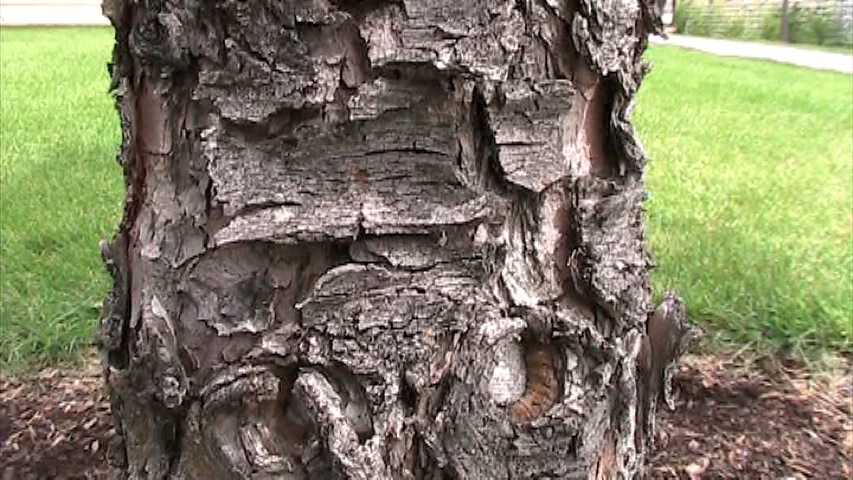 |
 |
| Pinus flexilis - The bark forms in small plates and is gray-brown in color. | Pinus mugo - The bark forms in plates and and is gray-brown in color. |
 |
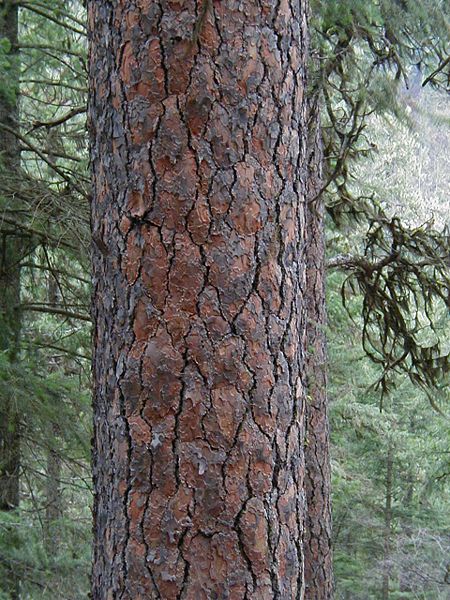 |
| Pinus nigra - The bark is reddish-brown in color and exfoliates in plates, giving it a rich texture. | Pinus ponderosa - The bark is orangish-red in color with the valley between plates being nearly black. |
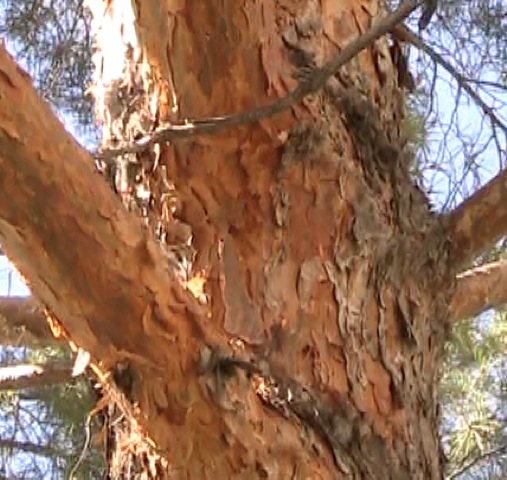 |
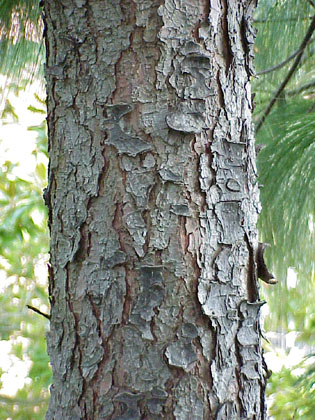 |
| Pinus sylvestris - The bark of Pinus sylvestris is its most ornamental feature. It is a mixtures of rusty reds, oranges and browns and exfoliates to create a beautiful texture and color pattern. | Pinus wallichiana - The bark is gray-brown and forms in rough plates that curl slightly on the edge. |
Form
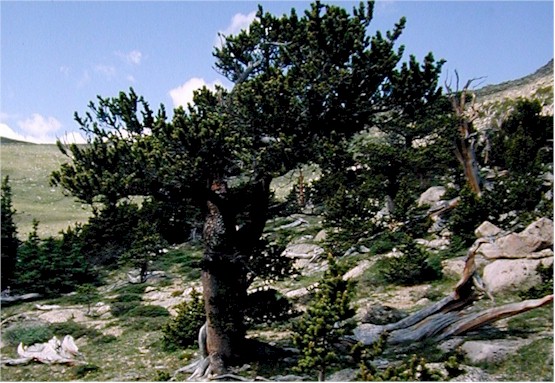 |
 |
| Pinus aristata - It is typically a small and irregularly shaped pine tree. It can reach 40-60 feet high, but would take hundreds or thousands of years to do so. | Pinus edulis - It is a small evergreen tree or large shrub. It branches low to the ground, but is almost always single stemmed. It grows up to 20 feet tall. |
 |
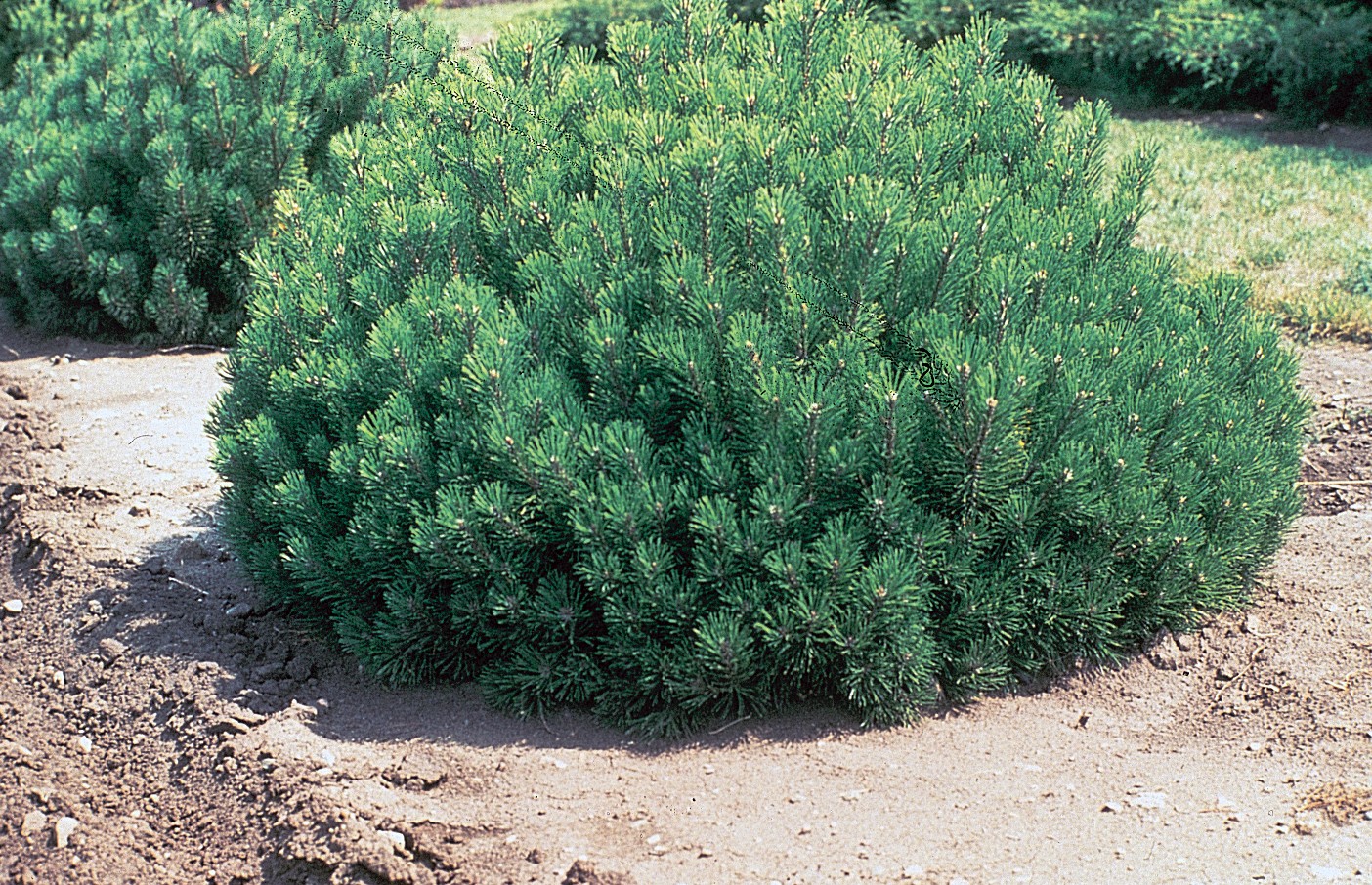 |
| Pinus flexilis - It has a very strong pyramidal habit until very mature. It grows 30-50 feet high and 15-35 feet wide. | Pinus mugo - It grows naturally as a loose tree, not exceeding 15 feet high. Almost all the available cultivars are dwarf or miniatures, and grow as a compact shrub, 2-4 feet high. |
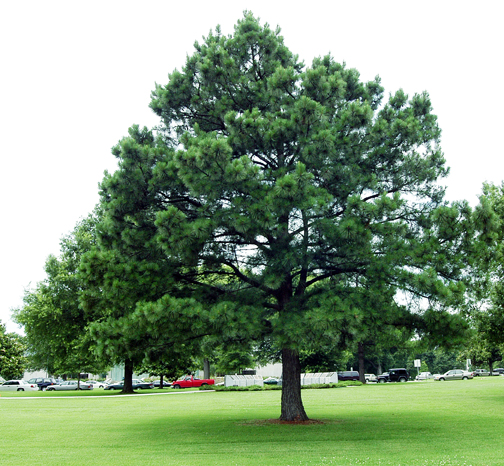 |
 |
| Pinus nigra - It grows 50-60 feet hagh and 20-40 feet wide. When mature the tree has a spreading form with a flat top. | Pinus ponderosa - It has a narrowly pyramidal form and grows 60-100 feet high and 25-30 feet wide. Mature trees may have a rounded top. Image: Walter Siegmund |
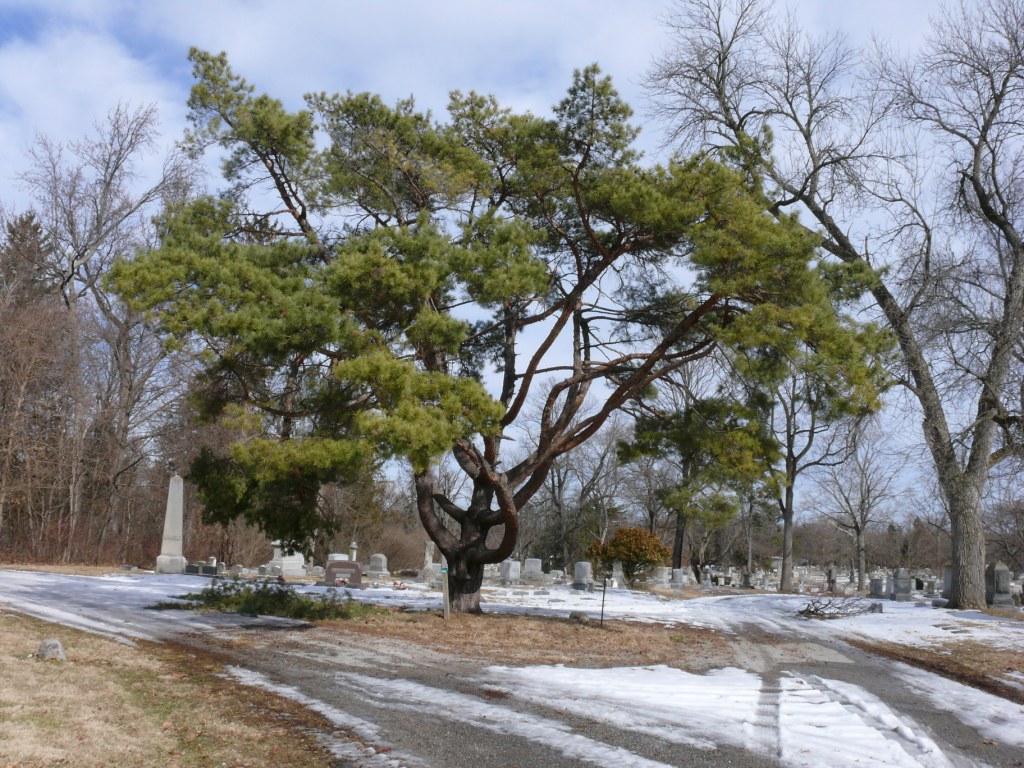 |
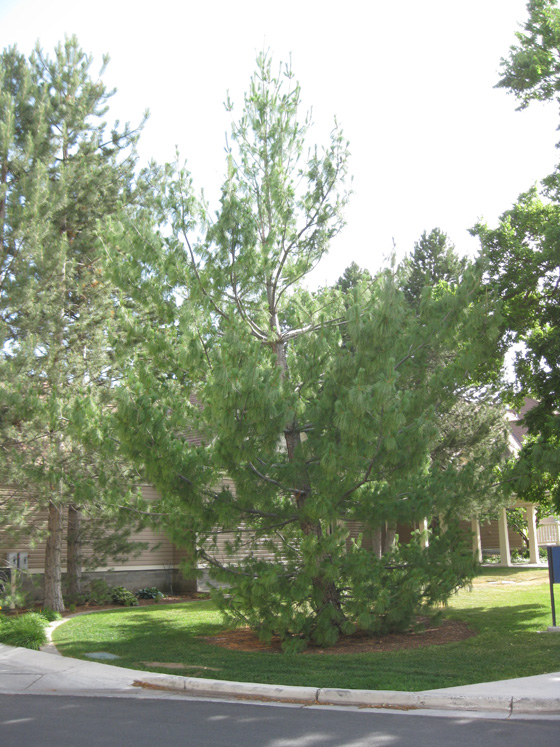 |
| Pinus sylvestris - It grows 30-60 feet high and 30-40 feet wide. It has a broad and spreading form. | Pinus wallichiana - The tree reaches 30-50 feet high and 20-30 feet wide. It is low-branching and has a loosely pyramidal form. |